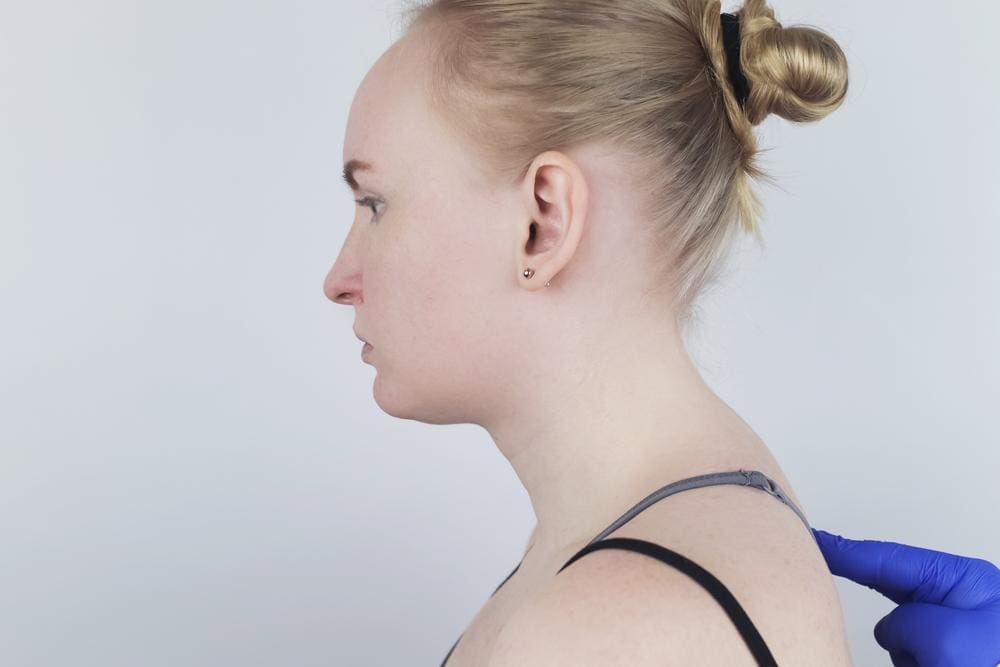
A Dowager’s hump is a rounded mound or lump on the upper back. It’s also called a neck hump, hunchback, or rounded back. The official medical term for the condition is kyphosis.
Anyone can develop a Dowager’s hump, but it got its nickname because it was so common among older women. It develops over time when someone leans and bends their neck forward. Poor posture eventually causes an abnormal curve of the upper vertebrae.
The condition varies in severity and worsens over time if someone doesn’t do anything to counteract it. Common symptoms of Dowager’s hump include:
Yes.
Chiropractic adjustments are one of the most effective treatments for Dowager’s hump. This is because chiropractic treatments adjust spinal misalignment.
Chiropractic treatments are also customized for a patient’s specific concerns. Once diagnosed, your chiropractor will design a dowager's hump treatment plan.
In most cases, chiropractic treatment for the condition is the flexion-distraction technique. This is a gentle movement of the cervical spine that releases accumulated pressure. It also reduces inflammation and sensitivity.

Additionally, chiropractors might recommend massage therapy and ultrasound for treating Dowager’s hump.
Before treating Dowager’s hump, make sure you get an official diagnosis. Your chiropractor can help you with this.
In many cases, you can see the hump without X-rays. However, it’s essential to calculate the angle of your condition to ensure proper treatment.
Usually, mild to moderate kyphosis is treatable without surgery or other invasive treatment.
Chiropractic adjustments are among the most effective tools for treating Dowager’s hump. Chiropractic treatment plans for neck humps usually include:
In most cases, multiple treatments are needed to improve posture, alleviate pain, and correct the problem.
In addition to the treatments performed in the chiropractor’s office, you can also do exercises at home.
For most people, the underlying cause of a neck hump is muscle weakness that develops over time. Exercises are designed to increase muscle strength, which helps you reposition your spine and improve your posture. The most common treatment options recommended for at-home treatment include chin tuck exercises and scapular squeezes.
The most important thing you can do at home to treat Dowager’s hump is consistently practicing the exercises your chiropractor recommends in good form. Pay attention to how your body feels and gradually increase how many exercises you do each day. Over time, you’ll notice improvements in how you feel and the hump looks.
Contact your chiropractor and discuss adjusting what you’re doing if you experience pain while performing at-home exercises.
Physical therapy can be used with chiropractic treatments to correct Dowager’s hump. Your chiropractor may or may not recommend visiting a physical therapist to help with additional shoulder and neck exercises and stretching.
Several things can worsen a Dowager’s hump, including:

Dowager’s hump has many causes, including:
The best thing you can do, regardless of the specific reason you have kyphosis, is practice good posture.
Preventing a Dowager’s hump from forming is the best option for dealing with the problem. After all, “prevention is the best medicine,” which is undoubtedly true with neck humps and other issues caused by poor posture.
Your posture plays a vital role in preventing Dowager’s hump. Modern life makes it more challenging to maintain good posture, but it is possible. When sitting, ensure your feet are flat on the floor and keep your knees at a 90-degree angle. Stand with your shoulders back and down and tuck your chin slightly back toward your neck.

If you spend a lot of time sitting, take plenty of breaks. It’s also a good idea to move and stretch during these breaks.
You can even practice good posture when sleeping. The best sleeping position for your posture is on your back with a pillow under your knees. Even if you can’t sleep through the night on your back, spend some time lying in bed this way before drifting off to sleep.
In addition to what you can do on your own, chiropractic treatments are also a great way to prevent Dowager’s hump and improve overall health.

© Accident Care Chiropractic | Hablamos Español
Located in: North Portland, NE Portland, SE Portland, Gresham, Clackamas, Oregon City, Hillsboro, Bethany, Beaverton, Tigard, Forest Grove, Woodburn,
McMinnville, Keizer, Salem, South Salem, Bend, Springfield, Vancouver, Hazel Dell, East Vancouver, Pasco, Kennewick, Lakewood.
We Specialize in Car Accident Treatment & Recovery
Home | About Us | Testimonials | Blog | Sitemap | Privacy Policy | Services | Locations | Contact Us